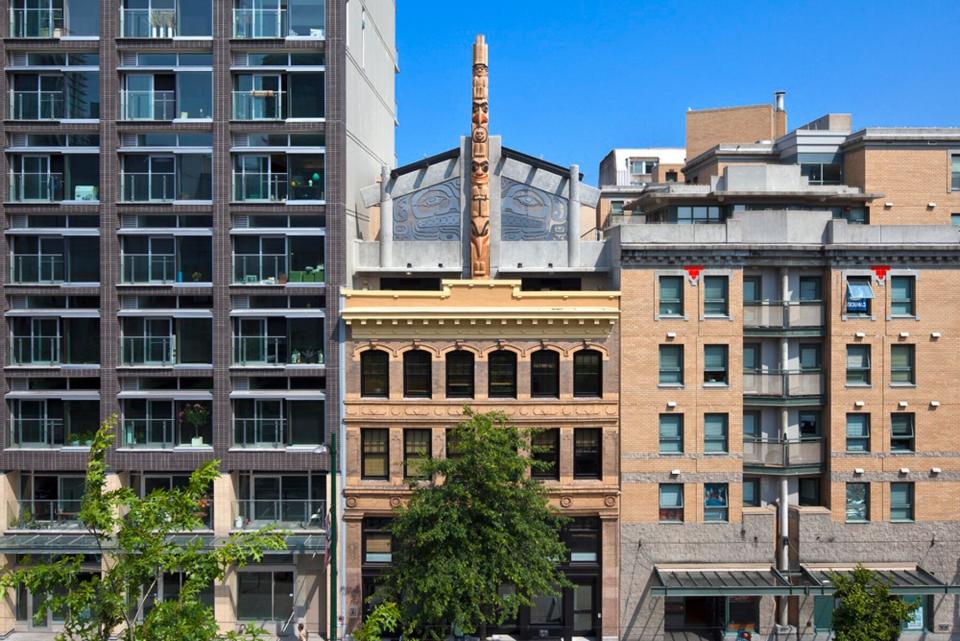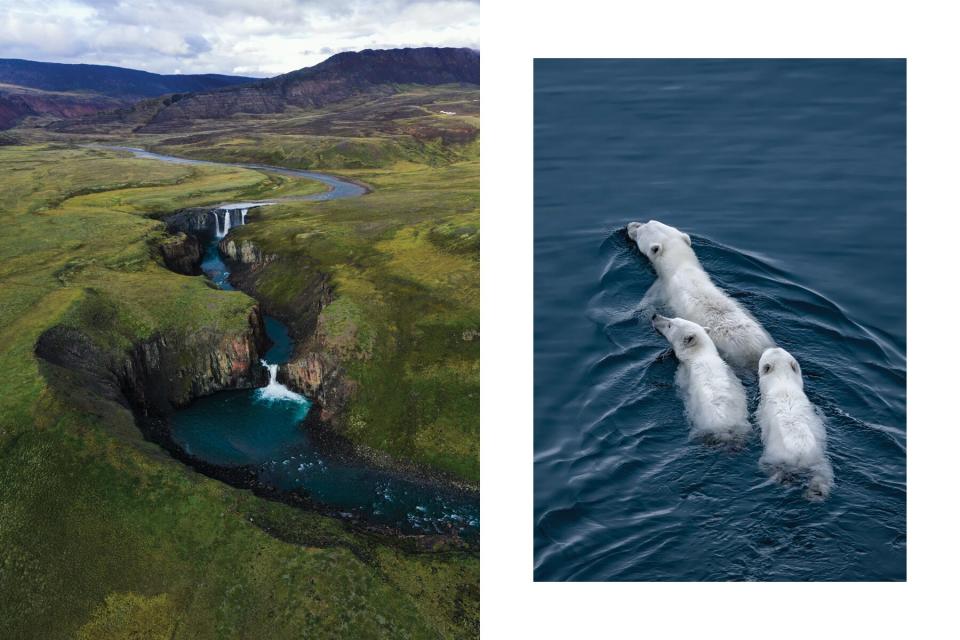Getting to Know Canada's Indigenous Peoples Through Tourism

The name "Canada" is based on the Huron-Iroquois word kanata, which means "village." Misinterpreting the directions he got from two Indigenous youth back in 1535, explorer Jacques Cartier used the word "Canada" to refer to the region governed by chief Donnacona near what's now called Quebec City. "Canada" eventually became the name for all the land at the top of the North American continent.
With vaccination rates climbing, Canada has reopened its borders to travelers, and provided you're fully vaccinated, the country is ready to welcome you to explore its big cities, tiny towns, and wide-open spaces once again.
For your next trip to Canada, though, add an element of Indigenous tourism to your plans. Whether you choose activities on unceded land or within a First Nation's territory, select experiences by Indigenous peoples rather than just about Indigenous peoples.
1,700 Unique Indigenous Tourism Experiences
"Indigenous tourism provides an opportunity to connect with the people who have called these lands home for millennia in a way that contributes positively to [their] communities," says Keith Henry, president and CEO of the Indigenous Tourism Association of Canada (ITAC).
Incorporating a few Indigenous tourism activities — there are about 1,700 — into your itinerary offers a more in-depth understanding of the land and its people, while also giving visitors an original experience they can't get anywhere else.
Related: More responsible travel ideas

Courtesy of Indigenous Tourism Canada
Indigenous Peoples in Canada
About two million people in Canada (5% of the population) identify as Indigenous — First Nations, Inuit, or Métis. About half live in cities, and half live in some 630 First Nations and 50 Inuit communities. While each has a distinct culture, heritage, governance, and often even language, you'll find some commonalities, including a deep respect for elders, an emphasis on the importance of oral traditions, and a connection to nature and the land.
Indigenous cultures are being reclaimed and rejuvenated by Indigenous peoples in Canada. More broadly, Canada is now recognizing its history and the systemic discrimination Indigenous peoples still face. The process of reconciliation with the creation of new, mutually respectful relationships is underway, and tourism plays a part.
Indigenous tourism, says Henry, "supports the revitalization and broader understanding of Indigenous culture in a fun and engaging way" and is "a means to rediscover and share [Indigenous] culture with the world." He adds, "Tourism has given our communities an opportunity to tell their stories, reclaim their cultures, languages, and history, to be proud of who they are, and to share that with the world."
"The Original Original"
The easiest way to find Indigenous tourism activities in Canada is via the Destination Indigenous website. Look for the new flame and double O symbol of "The Original Original" brand mark, which is being added to websites, signs, and advertisements.
Unveiled on 2021's National Indigenous Peoples Day (June 21), the new mark identifies tourism businesses that are at least 51% Indigenous-owned, embrace Indigenous tourism values, offer market-ready experiences, and are members of ITAC.
Traditional Territories and Unceded Land
Wherever you are in Canada, tourism activities take place on the traditional territories of Indigenous peoples. That might mean reserve land, areas recognized by land claims, land that is self-governed, or unceded land.
When Europeans began colonizing what's now called Canada, they imposed the notion of the nation-state and entered into treaties — of varying degrees of fairness — with many First Nations. More treaties were signed in eastern and central regions than in the west.
As an example, about 95% of British Columbia, Canada's westernmost province, is unceded First Nations territory. For instance, when traveling to the city of Vancouver, you're visiting the traditional, unceded territory of three Coast Salish Nations — the xʷməθkʷəy̓əm (Musqueam), Sḵwx̱wú7mesh (Squamish), and səl̓ilwətaɁɬ (Tsleil-Waututh).
Related: 20 of the Most Populous Cities in the U.S. — and the Native American Tribes That Lived There First

Angelo Cikes
Vancouver: Tourism on Unceded Land
There are many Indigenous tourism activities to choose from in Vancouver. In addition to visiting galleries and museums, which feature Indigenous art and artifacts, you could explore Stanley Park with a cultural ambassador from Talaysay Tours. You'll learn how Indigenous peoples harvested the plants of this temperate rain forest for medicine, food, and technology, as well as the history and traditions of the Indigenous people who live here. Or, with Takaya Tours, paddle the waters around Vancouver in a replica of a traditional ocean-going canoe and learn about the customs of the Tsleil-Waututh Nation.

Courtesy of Indigenous Tourism Canada
Try Indigenous foods like bison, candied salmon, and bannock (unleavened bread) at Salmon n' Bannock, Vancouver's only Indigenous-owned and -operated restaurant, according to its site. Keep your eye out for Indigenous fusion tacos and burgers from the Mr. Bannock food truck, which also has premade bannock mixes you can take home.
For a hotel, choose one of 18 boutique rooms at Skwachàys Lodge, Canada's first Indigenous arts hotel. Here, you can experience Indigenous art and culture plus help support two social enterprises, including an artist-in-residence program.
Quebec: Tourism on the Traditional Territory of the Essipit Innu First Nation
The Essipit Innu First Nation has been offering tourism activities since 1978, with an emphasis on experiencing nature on Innu lands. People of the broader Innu Nation predominantly live in the eastern part of Quebec and on the Labrador Peninsula in the province of Newfoundland and Labrador.
Join the Essipit Innu Nation's whale-watching tour in the St. Lawrence River estuary, where you'll likely see humpback, minke, and fin whales, and perhaps even blue whales and belugas. Other activities include kayaking, stand-up paddleboarding, and fishing. Or, you can go black bear (mashku) watching and learn how Innu traditions are tied to this important animal. Entreprises Essipit offers a variety of accommodations, often with views of the river, where you may see whales swimming.

Heiko Wittenborn
Nunavut: Tourism on Traditional Inuit Territory
On Baffin Island in Nunavut territory in the far north, you can choose from several in-depth experiences with Inuit guides. Arctic Bay Adventures is based in Arctic Bay, an Inuit community of about 800 people and one of the world's most northerly communities.
On the nine-day Life on the Floe Edge tour, you'll experience 24 hours of sunlight and have a good chance of seeing polar bears, narwhals, walrus, and beluga and bowhead whales while camping on the ice of Admiralty Inlet. You can also learn how to build a traditional igloo, go dog sledding, and meet Inuit elders, experiencing a part of Canada that few get to see.

Jenny Wong
Across Canada: Indigenous Tourism Everywhere
From coast to coast to coast, every Canadian province and territory has unique Indigenous tourism activities. Check out more offerings on the Destination Indigenous website and enjoy your stay in Canada.


